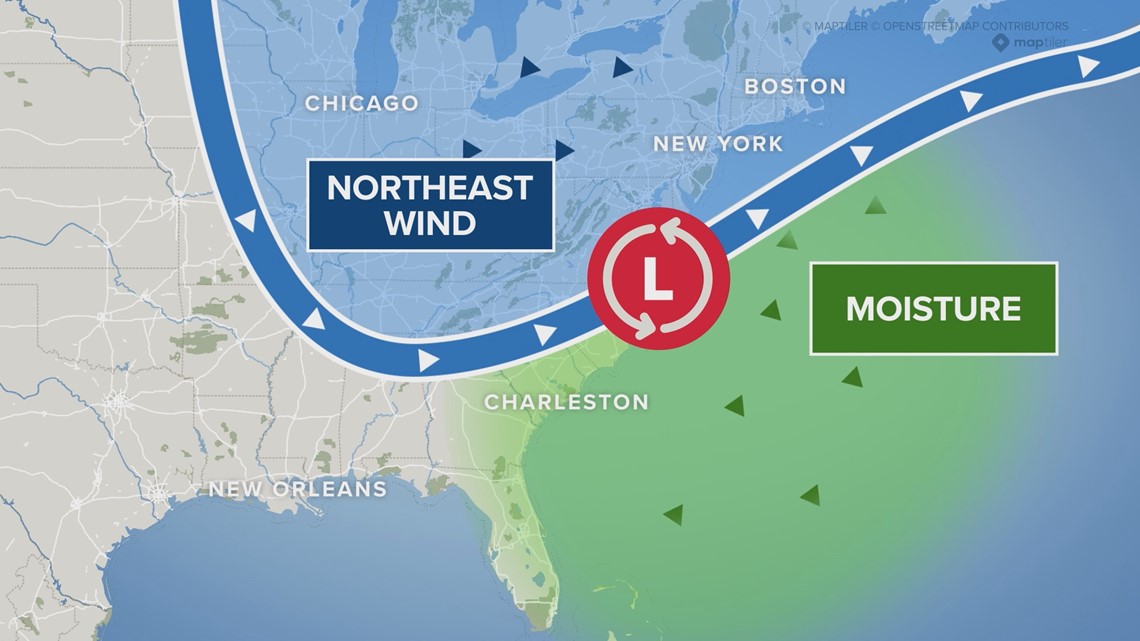CHARLOTTE, N.C. — A nor’easter is a large storm system, typically located along the East Coast of the United States. They can occur at any time of the year but are most frequent and strongest between September and April.
Nor’easters cause billions of dollars in damage, severe economic issues, transportation disruption, and flooding disasters annually.
Despite its name, nor’easters are not named for the Northeast region of the United States. Rather they are named for the direction the winds are blowing from – the north and the east.
The entire East Coast, including in the Southeast, provides an ideal breeding ground for these storms.
During winter, the polar jet stream transports cold, arctic air southward across the plains of Canada and the U.S. As it tries to move northeast, the polar jet combines with warm air from both the Gulf of Mexico and the western Atlantic Ocean.
Nor’easters usually develop in the latitudes between Georgia and New Jersey – within 100 miles of the East Coast, according to the National Weather Service. The storms tend to form here because the Gulf Stream helps keep the coastal Atlantic relatively warm during the winter.
The contrasting temperatures between the warm air over the ocean and the cold air over land provide fuel for nor’easters.
These storms generally move northeastward and reach maximum intensity along the coast of New England and Canada's coastal provinces.
The impacts from a nor'easter, including those effects felt in the Carolinas, include high winds, heavy precipitation, beach erosion, and coastal flooding.
For the latest weather alerts, download the WCNC Charlotte mobile app and enable push notifications.
Types of nor'easters


There are two main types of these storms: Miller A and Miller B.
Miller A
A Miller A nor’easter is the type that impacts the Carolinas the most. The low pressure originates over the warm ocean water and rides up along the coast. The track of the low determines how much rain we experience and whether that can become a wintry mix or even snow.
Miller B
A Miller B nor’easter has a low pressure system originating in the Midwest region before moving across the Southeast. It then settles along the coast. This storm system is typically weaker once it tangles with the Appalachian Mountains. With a Miller B nor’easter, the Carolinas see a lesser chance of rain and a lesser chance of experiencing winter precipitation.
Historic nor'easters
One of the most memorable Nor’easters in the Southeast is the March 1993 ‘Superstorm’ – also known as the Storm of the Century.
While Charlotte recorded just under two inches, places like Lincolnton and Hickory received over nine inches.
Contact Brittany Van Voorhees at bvanvoorhe@wcnc.com and follow her on Facebook, X and Instagram.
WCNC Charlotte’s Weather IQ YouTube channel gives detailed explainers from the WCNC Charlotte meteorologists to help you learn and understand weather, climate and science. Watch previous stories where you can raise your Weather IQ in the YouTube playlist below and subscribe to get updated when new videos are uploaded.

